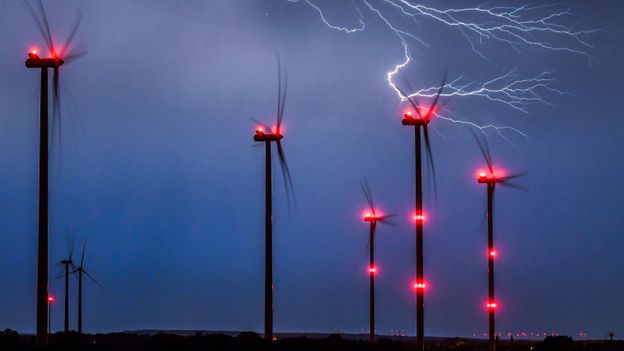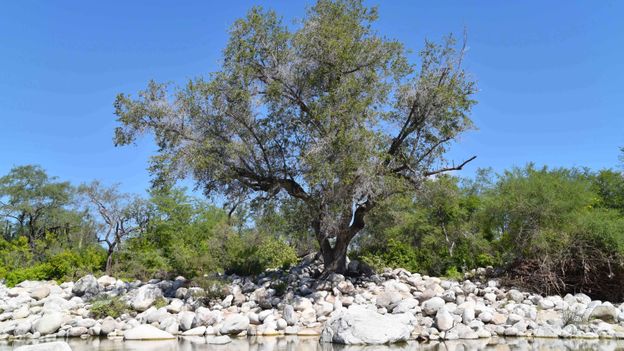Although Shimizu’s turbine may look impressive, it is in fact dwarfed by conventional propeller turbines. The blades of conventional propeller turbines in Japan typically reach 40m with a tower height of almost 80m. Conventional turbines in Hokkaido, for example, have a maximum output of three megawatts (MW). The Challenergy wind turbine, in contrast, currently generates 10KW (or 0.01MW). But Shimizu plans to scale up his turbine to reach 100KW, which would require a turbine around 50m tall.
While they might never be as efficient as the conventional turbines, the appeal of these whisk-shaped structures is their robustness. The 10KW version, installed in Ishigaki, Okinawa, has already recorded its first electricity generation during a typhoon, which Challenergy believes is a world first. In October 2019, Ishigaki escaped Typhoon Hagibis, but a smaller storm, Typhoon Mitag, struck the island. Challenergy’s sensors recorded a maximum wind speed of 43 to 45m/s (metres per second) – 96-100mph – during the storm. They claim their unit can survive winds of up to 70m/s (156mph) but has an upper operating limit of 40m/s (89mph). To put this into perspective, the Typhoon Hagibis had 10-minute sustained winds of 54m/s (120mph) and one-minute sustained winds of 72m/s (160mph), which means only the very peak of the largest typhoons would pose a threat to the turbine.
Most propeller turbines today have an operating limit of around 20-30m/s (44-67mph). Alex Byrne, a principal engineer at DNV GL, a Norway-headquartered international energy consulting company, and who specialises in wind energy, says that this is a design decision. “If a turbine designer chose to, they could design a turbine to operate up to 40m/s as well. But it makes more sense economically for most sites that they are targeting with their turbines to design it for a lower cut-out wind speed,” she says.
Keeping the lights on
For many sites around the world where turbines are active, there may be winds of 25m/s (56mph) or more just a few hours per year. For such sites, it doesn’t make sense to create very strong turbines. “Challenergy is targeting an application that modern wind turbines do not target. This is neither good nor bad, it just means Challenergy needs to make sure the economics work out for their application,” says Byrne.
Challenergy’s turbines are priced at $250,000 (£190,000), which is expensive considering that small standard propeller wind turbines of comparable power typically cost tens of thousands of dollars. Large, commercial wind turbines cost upwards of $2m (£1.5m) but as they generate megawatts of power, they tend to be more economical in the long term.
Kobayashi agrees that the average wind speed for a site is very important to work out which kind of turbine makes financial sense. For sites that experience high wind speeds only very occasionally, Challenergy’s turbines would be an expensive case of over-engineering. However, if the wind turbine can generate electricity for longer, when other turbines might be non-operational due to high wind speeds or turbulence, then this such a turbine could come into its own.
The Philippines, the most typhoon-prone country in Asia, could make a good site for these robust turbines for other reasons too. In many areas of the Philippines small-scale diesel generators are common, but shipping diesel across the archipelago drives up costs – especially for more remote islands – making renewable alternatives more appealing. Local Philippine governments have committed to purchasing seven of Challenergy’s turbines, which will form part of a number of micro-grids.
These micro-grids will incorporate solar technology as well as Challenergy’s wind turbine, which will charge batteries, alongside diesel generators. In a micro-grid context, Byrne says that a small, robust and highly reliable turbine could be a very good application of the technology. “Reliability and capital cost for the annual energy generated are going to be of primary concern,” Bryne says. “If [Shimizu’s] claims of high reliability and high capacity factor are true, then it could be quite compelling.”












